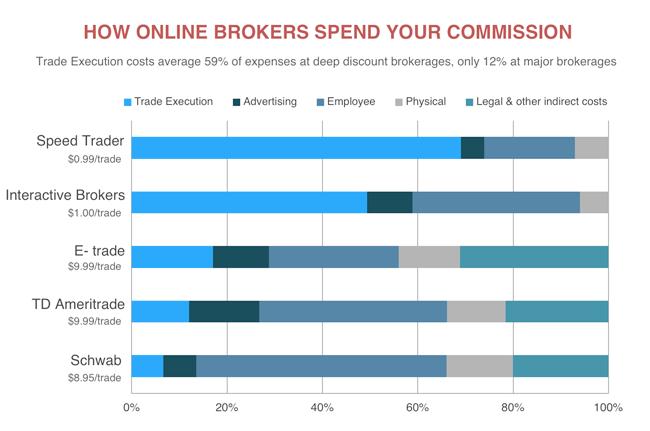What makes a successful investor? Is it your ability to beat the market or to beat your competition?
In my opinion, being a successful investor doesn’t have to do with out-earning your peers or leaving the S&P in the dust. No, my definition is very simple.
Develop an investment plan using a variety of factors, and be able to execute and follow that plan indefinitely.
Suitability
This is step 1. You need to figure out what your “suitability” is. Your suitability will lay a very good foundation upon which you build your investment plan. Suitability involves three things:
- Risk tolerance – This is your ability to handle drawdowns in your portfolio. If you crumble with fear every time you lose 5 percent, then you’ll probably want a fairly conservative portfolio*. On the other hand, if you have no problem seeing your portfolio drop 50 percent, then you’re ready for a more aggressive allocation.
- Time horizon – Probably the most important factor of the three. Your time horizon is basically when you’ll need the money. A long time horizon allows an investor to take on more risk because there’s more time for them to recover from drawdowns. The inverse is true for short time horizons. You’ll want to be conservative because you have little time to earn back what’d you lost.
- Long time horizon – 10+ years
- Medium time horizon – 2-5 years
- Short time horizon – Less than 2 years
- Goals – What’s your plan? Is this savings going to be used as a down payment for a house? If so, there’s probably a minimum dollar amount you have in mind and you’ll want to tip the odds in your favor that you don’t go below that. Similarly, if this is for retirement and you have 30 years to invest, you have the green light for risk assets.
Keep in mind that all three of these things, plus one other, need to be used together when determining your asset allocation. If you are tolerant of risk, but need the money in 5 years, somewhere in the middle between aggressive and conservative is probably better. That one other thing is your behavior as an investor.
Investor behavior
The finance/investment world is coming around to this, but your psychology is a HUGE factor as an investor.
Obtaining a high return on assets is one of your goals, but it should not be the primary goal. When you create an investment plan you have to make sure it’s something you can actually stick with.
I wrote about it previously, here.
You could be tolerant to risk and you could have a long time horizon, but if you lay awake at night every time the market drops, then you need to rethink your approach.
That kind of fear and anxiety hinders your ability to follow your plan. What normally happens, is someone sets an unrealistic investment plan, one where they take on too much risk.
Thereafter, volatility picks up. They check their portfolio and it’s declined 15 percent. They wait a day and check the next.
Another 2 percent drop. Then the thought of 2008 creeps into their heads and the panic sell.
You can set up a great investment plan, but your behavior will ultimately make the decisions. Keep that in mind.
Asset allocation
Using your suitability and behavior, you can then determine your asset allocation. The types of assets you use in your allocation can vary. If you wanted to invest a small percentage of your portfolio in gold, for instance.
The three most common assets are stocks, bonds, and cash. With risks ranging from high risk to virtually (there’s always some risk) no risk.
Speaking very generally, people with long time horizons and are more tolerant of risk, have a more aggressive portfolio. The inverse is true for people with short time horizons and a low-risk tolerance.
That said, the ultimate goal is to develop a plan that meets your goals in the smoothest fashion possible.
Ignore the noise
Throughout your investment “career” you’ll run into people, friends, family, or even random people on the street that will tell you the sky is falling or that the newest IPO will go gang-busters and you need to get in now!
Put your blinders on. There are two things that hurt investors. Their own behavior and their ability, or lack thereof, to tune out what’s happening around them.
This is extremely difficult because we, as humans, have evolved to use our peers to compare or judge, our standing in society.
Stay in your lane and focus on your goals.
Never stop learning
Every single experience in your life is a learning opportunity, especially the bad one. I recommend journaling daily, recount your day, and dig little nuggets of knowledge from your experiences.
Additionally, take in some form of content every day that improves your understanding in your line of work, or in an industry that you’re interested in.
With regard to your finances, give our Toolkit page a look. There you’ll find a number of books and resources to enhance your financial know-how.
Please be advised: Everything written in this article is for informational purposes only and should not be taken as investment advice. Opinions are my own and do not reflect the opinions of this publisher or my employer.
Further reading:
My name is Jacob Sensiba and I am a Financial Advisor. My areas of expertise include, but are not limited to, retirement planning, budgets, and wealth management. Please feel free to contact me at: jacob@crgfinancialservices.com


